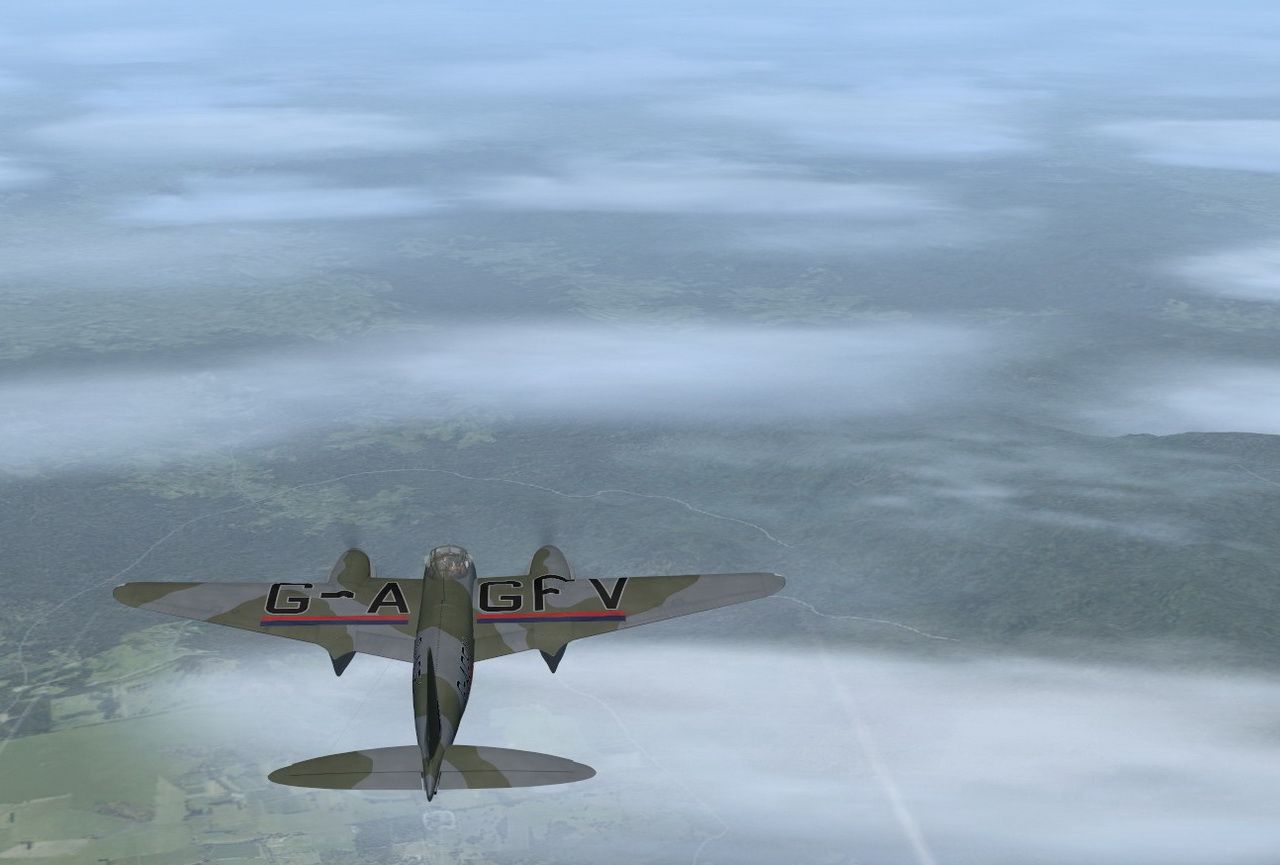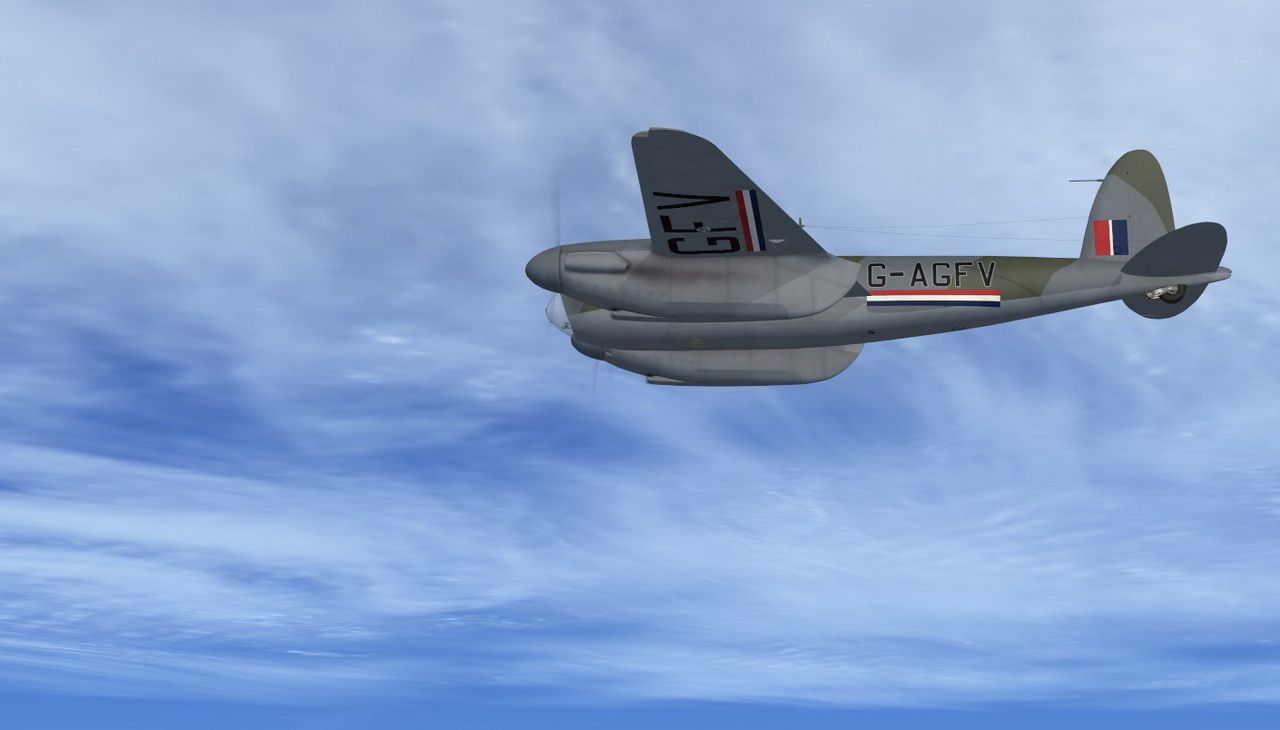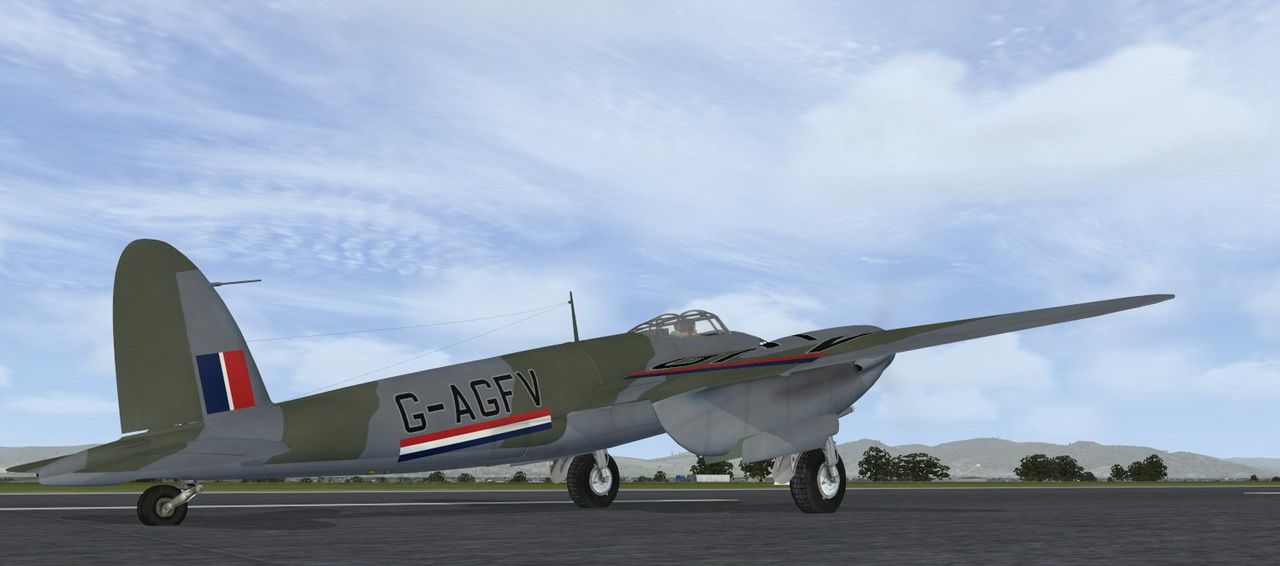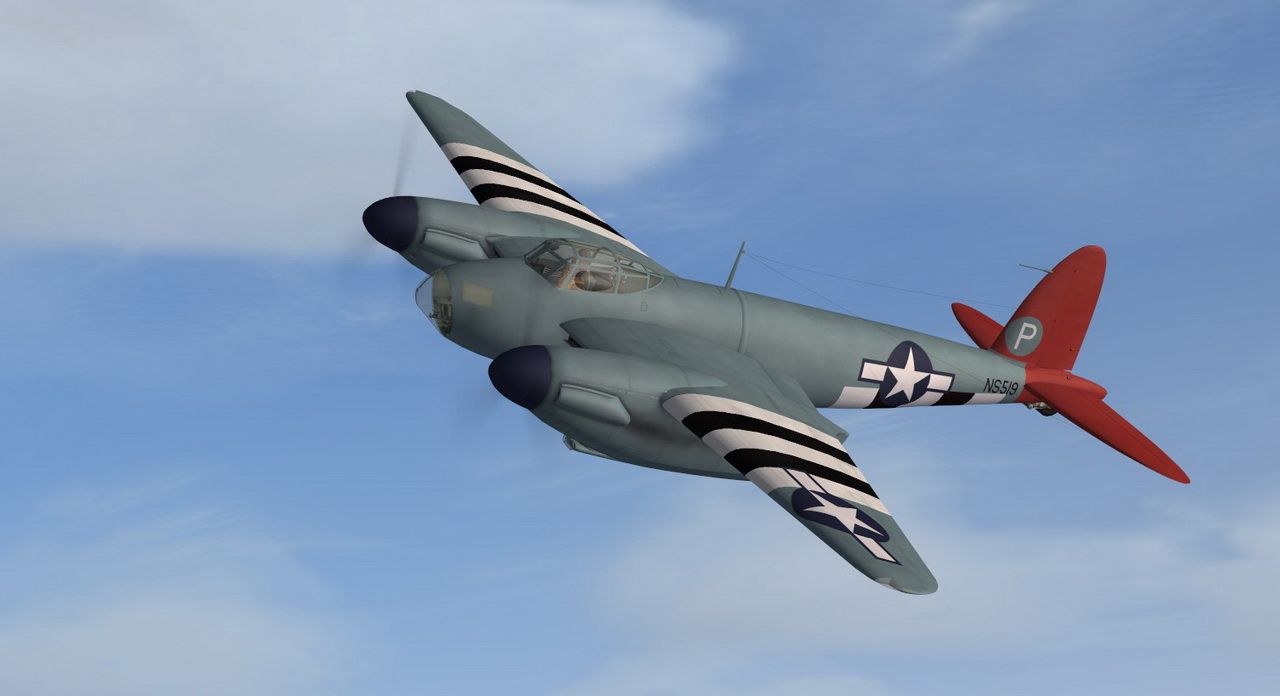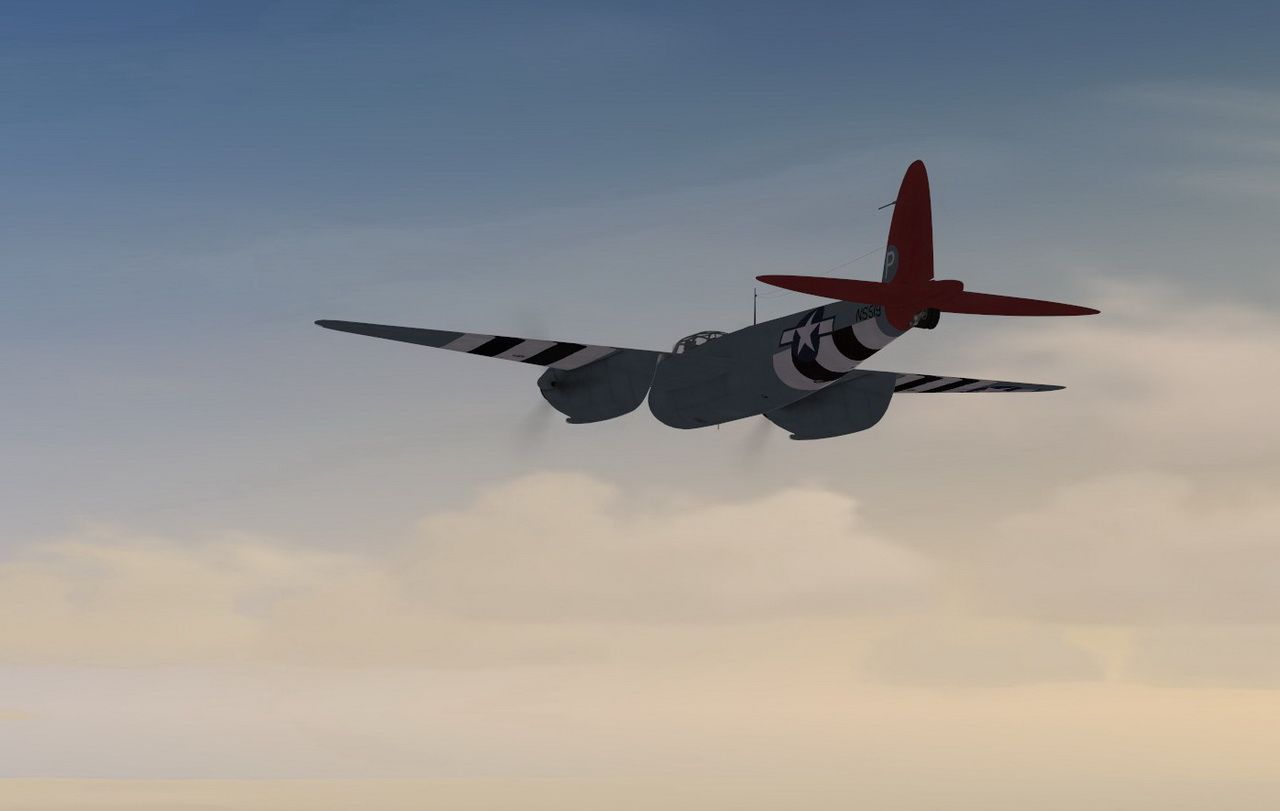For all of the Mosquito fanatics like me, here are some rather thrilling photos, from a very rare vantage point, taken from within Mosquito KA114 (the only example currently airworthy):
http://rnzaf.proboards.com/index.cgi?action=display&board=Airshows&thread=17762&page=1#175898
Note that this is a FB.26 fighter variant, with a different windscreen, fighter control stick, and gun sight (and a slab of armor plate sectioning off the cockpit from the nose (filled with guns and ammunition)). It seems like plans for how this aircraft will be transported to the U.S. aren't even yet settled, and the aircraft is already starting to be booked for air shows in North America this coming summer - such as the Hamilton 2013 Airshow, hosted by the Canadian Warplane Heritage Museum (
http://www.hamiltonairshow.com/). The aircraft will be joined in the air by the CWHM Lancaster and Vintage Wings of Canada's Spitfire and Hurricane.
Also, for anyone working on repaints for this wonderful model, here are some external detail shots:
http://rnzaf.proboards.com/index.cgi?board=walkarounds&action=display&thread=17563
Glyn Powell's Mosquito, which remains being restored at his shop, is very well advanced, and will be the next Mosquito taking flight in New Zealand. Glyn was the one who was able to reproduce the molds for the Mosquito fuselage so that the rebuilding of these aircraft to airworthy could take place. It has been reported via Classic Wings magazine, that there are negotiations taking place between Glyn and an organization in the UK with big backing called the Flying Mosquito Trust, which if things go forward as they are being discussed to be, the FMT will fund the remainder of the restoration of Glyn's Mosquito (ensuring that the aircraft will be completed in a timely manner - next three years or so). The further results of this will be that following completion of the aircraft, it will remain in New Zealand for a year, flying at various events, before the aircraft will be brought to the UK where it will be based from then on.
Although it is 'top secret', work has likely begun at Avspecs on the restoration of Mosquito TV959 to airworthy, which is owned by the Flying Heritage Collection (Everett, Washington). Although the wings will have to be manufactured new, as the originals were sawed apart when the aircraft was in prior ownership, the fuselage appears to possibly be good enough to be kept and restored, rather than manufactured new (like what had to be done on KA114).
Sometime within the next few years, Kermit Weeks also wants to transport his Mosquito (which was airworthy/actively flown up until 1990) from the EAA Museum, where it has been on display, to Fantasy of Flight where the old cracked paint and fabric will be removed and the wood and glue joints inspected (which are believed to be just fine). If everything checks out with the condition of the airframe, it will be re-covered and any other work needed will be done to get the aircraft flying again. The only obstacle mentioned that is preventing this, is available space at FOF, with the need for another hangar, as otherwise there wouldn't be anywhere to put it right now. According to Weeks, after the aircraft's appearance at Oshkosh in the summer of 1990, he was planning on flying the aircraft to a few military shows before ending up back at his museum location in Florida. However, just as Oshkosh was wrapping up that year, the invasion of Kuwait happened, and the military shows got cancelled, so the aircraft remained put. Then with Hurricane Andrew in 1992, and the effects that had on the old Weeks museum and aircraft, the situation with the Mosquito lingered, while everything else was being dealt with.
Photo by Gavin Conroy (more can be seen in the first link in this post).



